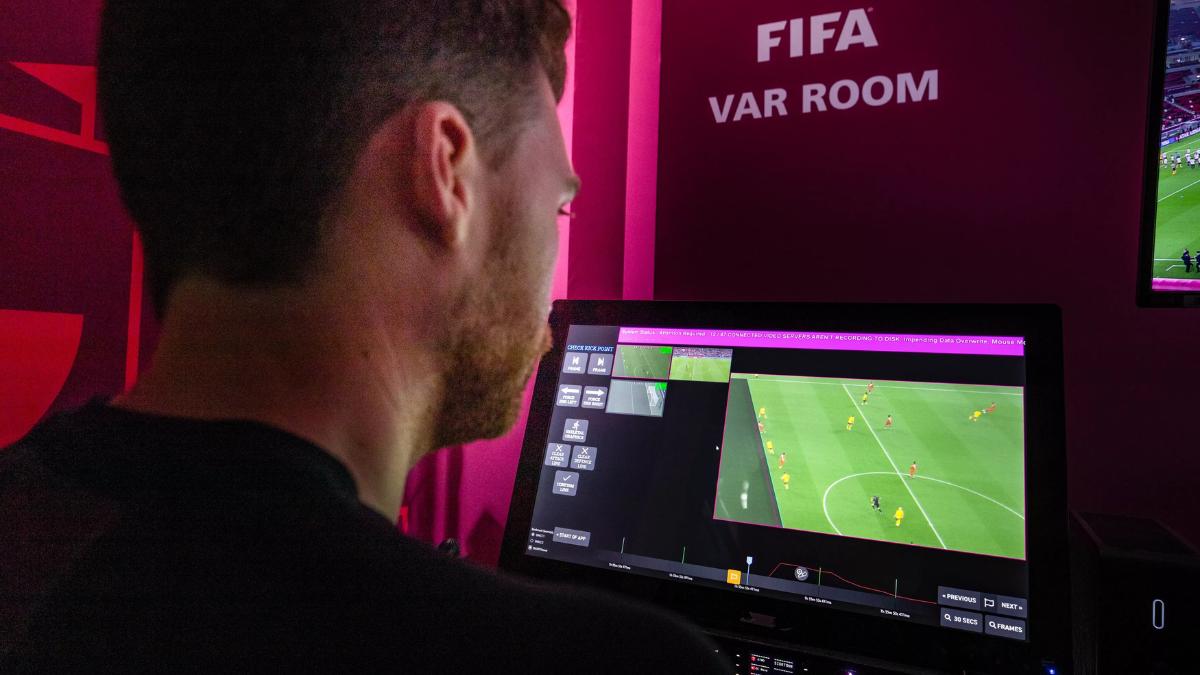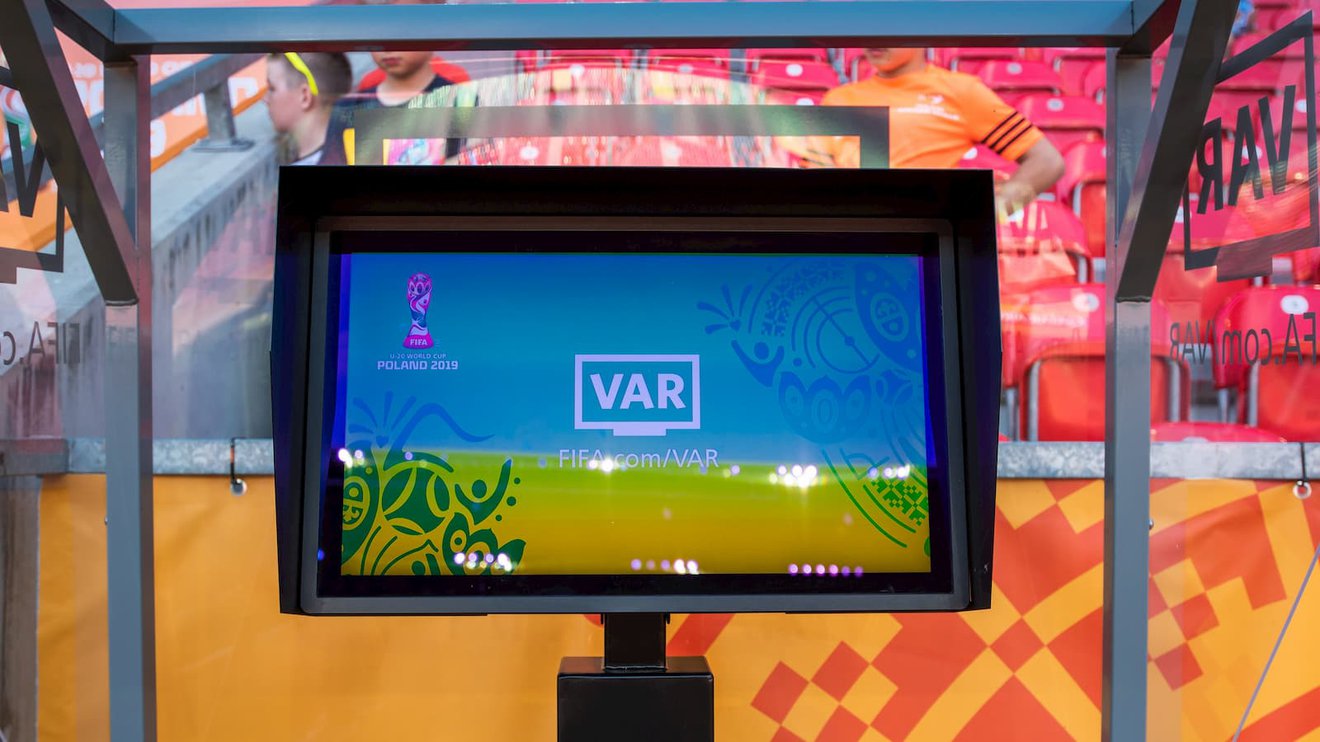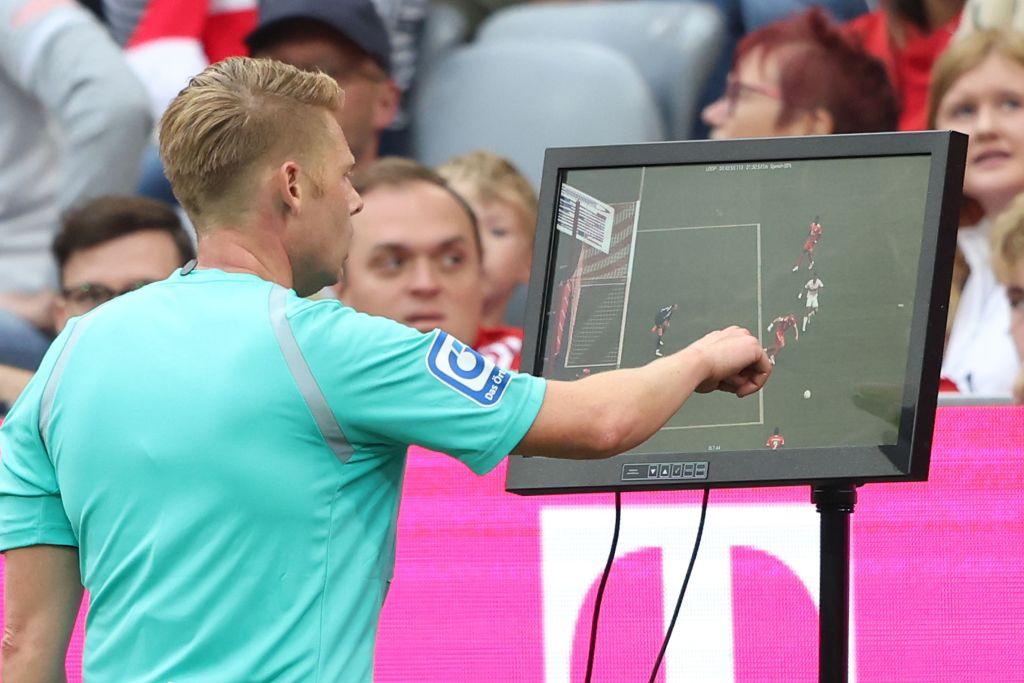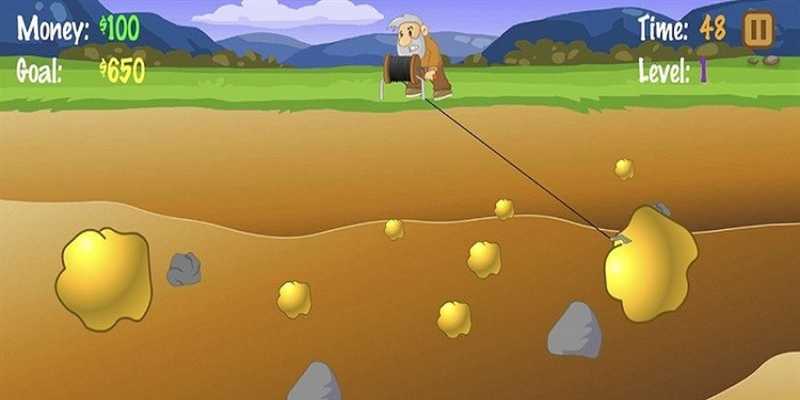In today’s fast-paced world, technology is evolving at an exponential rate. It has transformed the way we live, work, communicate, and do business. One such technology that has gained significant attention in recent years is Var technology.
Var, short for virtual and augmented reality, is a computer-generated simulation or enhanced view of the real world. It allows users to immerse themselves in a virtual environment or add digital elements to the real world. While this technology was initially used in gaming and entertainment, it has now expanded its reach to various industries, including healthcare, education, manufacturing, retail, and more.
In this article, we will explore the impact of this technology on business and society. We will delve into its applications, benefits, challenges, and potential future developments. So, let’s dive in.
Introduction to Var Technology
Var technology is a combination of virtual reality (VR) and augmented reality (AR). VR involves using a headset to enter a fully immersive digital environment, while AR overlays digital elements onto the user’s real-world environment. Var technology provides users with a sense of presence, allowing them to interact with and manipulate digital objects in a realistic manner.
The technology originated in the 1960s, but it wasn’t until recently that it gained mainstream popularity. With advancements in hardware and software, this technology has become more accessible and affordable for individuals and businesses alike.
Today, Var technology is being used in various industries, from entertainment and gaming to healthcare and education. Its potential applications are endless, and its impact on society is far-reaching.

VAR technology combines elements of virtual reality (VR) and augmented reality (AR)
Applications of Var Technology
Var technology has a wide range of applications, with each industry using it in different ways to suit their needs. Let’s take a look at some of the most prominent applications of this technology.
Gaming and Entertainment
The gaming and entertainment industry has been one of the early adopters of Var technology. It has revolutionized the gaming experience, allowing players to fully immerse themselves in a virtual environment. It has also opened up new possibilities for interactive storytelling, creating more engaging and realistic experiences.
In addition to gaming, Var technology has also been used in the entertainment industry, such as in theme parks and museums. It adds an extra layer of excitement and immersion to these experiences, making them more memorable for visitors.
Healthcare
Var technology has shown tremendous potential in the healthcare industry. It allows medical professionals to train in a safe and controlled environment, reducing the risk of errors during actual procedures. It also enables surgeons to practice complex procedures before performing them on patients, improving their skills and confidence.
Moreover, this technology has also been used for patient treatment, especially in pain management. By immersing patients in a virtual environment, they can be distracted from their pain and discomfort, making their treatment more bearable.
Education
The education sector has also embraced Var technology to enhance the learning experience for students. It allows teachers to create immersive and interactive lessons that capture students’ attention and help them better understand difficult concepts. This technology can also transport students to places they wouldn’t otherwise have access to, such as space or ancient civilizations.
Furthermore, this technology has also been used in vocational training, providing hands-on experience in a simulated environment. This is especially beneficial for professions that involve working with dangerous or expensive equipment, such as pilots, firefighters, and construction workers.
Manufacturing
Var technology has the potential to transform the manufacturing industry. It can be used to create virtual prototypes and test them in a simulated environment, reducing the time and cost of physical prototyping. It also enables workers to receive real-time instructions and guidance while performing tasks, increasing efficiency and reducing errors.
Furthermore, Var technology has also been utilized in product design and development, allowing designers to visualize and make changes to their designs in a 3D space.
Retail
The retail industry has also started incorporating Var technology into its operations. It allows customers to try on products virtually, such as clothes, makeup, and home decor, eliminating the need for physical fittings or samples. This not only saves time but also enhances the overall shopping experience for customers.
Moreover, retailers can also use Var technology to create virtual showrooms and stores, enabling customers to browse and purchase products from the comfort of their homes. This has become particularly relevant during the COVID-19 pandemic, where social distancing and safety measures have restricted physical shopping experiences.
Benefits of Var Technology
Var technology offers numerous benefits to businesses and society as a whole. Let’s take a look at some of the most significant advantages.

VAR technology provides numerous advantages to both businesses and society overall. Here, we’ll explore some of the most notable benefits
Enhanced User Experience
One of the primary benefits of this technology is its ability to provide an enhanced user experience. By immersing users in a virtual environment or augmenting their real-world environment, it creates a sense of presence that traditional media cannot match. This makes the experience more engaging, memorable, and enjoyable for users.
Improved Efficiency and Productivity
Var technology has the potential to improve efficiency and productivity in various industries. For example, in manufacturing, virtual prototyping can speed up the product development process, reducing time-to-market. In healthcare, virtual training and simulations can enhance medical professionals’ skills and reduce errors during procedures. Overall, this technology can enable businesses to complete tasks more efficiently and accurately.
Cost Savings
By using this technology, businesses can save significant costs in various areas. For instance, in training and education, virtual simulations can save money on expensive physical equipment or facilities. In product design and development, virtual prototyping can reduce the costs of physical prototyping. Additionally, Var technology can also eliminate the need for physical showrooms and stores, reducing overhead costs.
Access to New Markets
With Var technology, businesses can reach new markets and audiences. For example, by creating virtual showrooms, retailers can cater to customers who prefer online shopping. In education, virtual classrooms can enable students from different parts of the world to access quality education. This can help businesses expand their reach and increase their potential customer base.
Enhanced Safety and Risk Management
Var technology can also improve safety and risk management in various industries. For instance, in healthcare, virtual simulations allow surgeons to practice complex procedures before performing them on patients, reducing the risk of errors. In manufacturing, workers can receive real-time instructions and guidance while performing tasks, reducing the risk of accidents. This can have a significant impact on both business operations and society as a whole.
Challenges of Implementing Var Technology
While the benefits of Var technology are undeniable, its implementation does come with some challenges. Let’s take a look at some of the most significant hurdle’s businesses and society face when adopting this technology.
High Costs
One of the major factors hindering the widespread adoption of Var technology is the high cost associated with it. The hardware, software, and development costs can be significant, making it difficult for smaller businesses to incorporate it into their operations. This has resulted in limited accessibility and slow adoption rates in some industries.
Technical Limitations
Despite advancements in technology, Var still has some technical limitations that need to be addressed. For example, there may be delays or lags in the virtual environment, leading to a disorienting experience for users. This can be particularly problematic in industries like healthcare, where precision and accuracy are crucial.
User Acceptance and Adoption
Var technology is still relatively new, and not everyone may be comfortable using it. There may be resistance from users who are not familiar with it or prefer traditional methods. This can be a significant hurdle for businesses looking to incorporate Var technology into their operations.
Privacy and Security Concerns
As with any technology that collects and processes user data, privacy and security concerns are valid when it comes to Var technology. As more personal and sensitive information is collected and used in virtual environments, there may be risks of data breaches and unauthorized access. Businesses and developers must take steps to address these concerns and ensure the safety of user data.
Var Technology in Healthcare
The healthcare industry has been one of the most significant beneficiaries of Var technology. It has transformed medical training, patient care, and treatment in various ways. Let’s take a closer look at how Var technology is being used in healthcare.
Medical Training and Simulation
Var technology is revolutionizing medical training by providing a safe and controlled environment for students and professionals to practice. Trainees can simulate surgeries and other medical procedures, honing their skills and gaining valuable experience before performing them on patients. This reduces the risk of errors and improves patient outcomes.
Moreover, Var technology allows trainees to experience rare or complex scenarios that may not occur often in real life. This can help prepare them for any situation they may encounter during their medical careers.
Patient Treatment and Therapy
Var technology has also shown potential in treating patients by distracting them from their pain and discomfort. For instance, Virtual Reality Exposure Therapy (VRET) is used to treat patients with anxiety disorders. It exposes them to their feared objects or situations in a virtual environment, helping them overcome their fears without actually being exposed to them.
Similarly, Var technology has been used for pain management in patients with chronic conditions. By immersing them in a virtual environment, it can distract them from their pain and discomfort, reducing the need for medication.
Rehabilitation and Physical Therapy
In addition to medical training and treatment, Var technology has also been used in rehabilitation and physical therapy. It allows patients to practice movements and exercises in a virtual environment, making it easier to track progress and make adjustments. This can be especially beneficial for patients with mobility impairments or those recovering from injuries.
Mental Health Treatment
Var technology has also shown promise in treating mental health conditions such as post-traumatic stress disorder (PTSD), depression, and phobias. By creating a safe and controlled environment, it can expose patients to their triggers in a therapeutic setting. This can help them overcome their fears and manage their symptoms.
Var Technology in Education
The education sector has started embracing Var technology to enhance the learning experience for students. It has opened up new possibilities for interactive and immersive education, making learning more engaging and memorable. Let’s take a closer look at how Var technology is being used in education.
Interactive Learning
One of the most significant benefits of Var technology in education is its ability to create interactive learning experiences. Teachers can use Var tools and resources to supplement traditional teaching methods, making lessons more engaging and enjoyable for students. This can be particularly helpful for students who learn better through visual or hands-on experiences.
Virtual Field Trips
Var technology has also made it possible for students to go on virtual field trips, exploring places they wouldn’t be able to visit otherwise. It allows them to travel back in time, visit other countries, and even outer space, all while sitting in the classroom. This not only makes learning more exciting but also expands students’ geographical and cultural knowledge.
Hands-On Simulations
Var technology has also been used for vocational training, providing students with hands-on experience in a simulated environment. This is particularly useful for professions that involve working with dangerous or expensive equipment, such as pilots, firefighters, and surgeons. It allows students to practice and gain skills without the risk of harm or damage.
Special Needs Education
Var technology has shown potential in special needs education, particularly for students with learning disabilities or sensory impairments. By creating a more engaging and interactive learning experience, it can help these students overcome their challenges and learn at their own pace. This can be especially beneficial for students who may struggle with traditional teaching methods.
Var Technology in Manufacturing
In the manufacturing industry, Var technology has the potential to transform processes and operations. It can help businesses become more efficient, reduce costs, and improve safety measures. Let’s take a closer look at how Var technology is being used in manufacturing.
Virtual Prototyping
One of the primary applications of Var technology in manufacturing is virtual prototyping. It allows designers to create 3D models of products and test them in a simulated environment. This reduces the need for physical prototypes, saving time and cost in the product development process. Designers can also make adjustments and improvements to their designs in real-time, making the process more efficient.
Training and Guidance
Var technology has also been used in manufacturing for training and guidance purposes. By using virtual simulations, workers can receive real-time instructions and feedback while performing tasks. This can help them improve their skills and reduce errors, leading to better quality products. Moreover, it can also reduce training costs by eliminating the need for expensive physical equipment or facilities.
Quality Control and Inspection
Var technology can also be used for quality control and inspection in manufacturing. By using sensors and cameras, it can detect defects and anomalies in products and provide real-time feedback to workers. This improves the accuracy and speed of inspections, allowing businesses to detect and correct issues early on in the production process.
Remote Assistance
With Var technology, experts can provide remote assistance to workers in factories or plants. This is particularly useful in industries where specialized knowledge or skills are required, such as in the oil and gas sector. By using virtual tools and resources, experts can guide workers on-site without physically being present, reducing travel costs and saving time.
Var Technology in Retail
Var technology has also made its way into the retail industry, transforming the customer shopping experience. It has opened up new possibilities for retailers to engage with customers and create personalized experiences. Let’s take a closer look at how Var technology is being used in retail.
Virtual Try-On
One of the most significant applications of Var technology in retail is virtual try-on. By using augmented reality, customers can virtually try on products, such as clothes, makeup, and glasses. This eliminates the need for physical fittings or samples, making the shopping experience more convenient for customers. It also helps them visualize how products will look on them before making a purchase.
Personalized Shopping Experiences
Var technology has enabled retailers to create personalized shopping experiences for customers. By using data and insights, they can tailor recommendations and offers based on customers’ preferences and behaviors. This not only improves the overall shopping experience but also increases the chances of making a sale.
Virtual Showrooms and Stores
In addition to virtual try-on, retailers can also use Var technology to create virtual showrooms and stores. Customers can browse and purchase products from the comfort of their homes, eliminating the need for physical stores. This has become particularly relevant during the COVID-19 pandemic, where consumers are hesitant to visit physical stores due to safety concerns.
Data Collection and Analysis
Var technology also allows retailers to collect and analyze data on customer behavior and interactions. This can help them understand their target audience better and make informed business decisions. However, it also raises privacy concerns, and businesses must ensure the appropriate use and protection of customer data.
The Future of Var Technology
As we have seen, Var technology has tremendous potential and has already made a significant impact on various industries. But what does the future hold for this technology? Here are some potential advancements and developments that we can expect to see in the near future.

VAR technology holds immense potential and has already had a substantial influence on diverse industries
Improved Hardware and Software
The hardware and software used for Var technology are continuously evolving and improving. We can expect to see more advanced and affordable devices, such as headsets and hand-held devices, making Var technology more accessible for businesses and individuals alike. There will also be advancements in software, allowing for even more realistic and immersive virtual experiences.
Integration with Other Technologies
Integration with other technologies, such as artificial intelligence (AI) and the Internet of Things (IoT), will play a crucial role in shaping the future of Var technology. AI can enhance user interactions and create more realistic simulations, while IoT can enable better data collection and analysis. This integration will open up new possibilities for Var technology and its applications.
Expansion into New Industries
As Var technology becomes more affordable and accessible, we can expect to see it being used in new industries and applications. For example, it could be used in architecture and design to create 3D models of buildings or homes. It could also be used in travel and tourism to provide virtual tours of destinations. The possibilities are endless, and we can expect to see Var technology become an integral part of our lives in the future.
Conclusion
Var technology has come a long way since its inception and has made a significant impact on various industries. Its potential applications and benefits are vast, and we have only just scratched the surface of what it can do. However, there are also challenges and concerns that need to be addressed to ensure its widespread adoption and responsible use.
As technology continues to evolve, we can expect to see even more advancements and developments in Var technology. It will continue to transform the way we do business, educate ourselves, and interact with the world around us. Whether it’s in healthcare, education, manufacturing, or retail, Var technology is here to stay and will shape the future of business and society.








